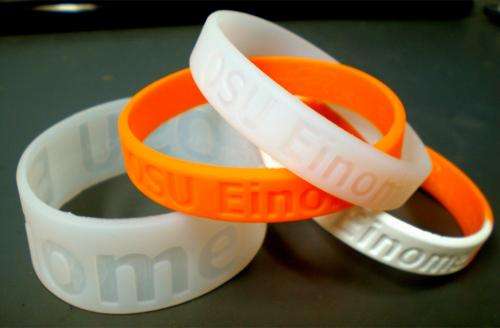A wristband for a different kind of cause—environmental health

From "Livestrong" to "Purple Paws," trendy wristbands have come to represent causes from cancer to ending cruelty to animals. Add a new wristband of a different sort: one that could close the loop on determining the potential disease risks of exposure to substances like pesticides. Scientists reported the development in the ACS journal Environmental Science & Technology.
Kim Anderson and colleagues note that people breathe, touch and ingest a mix of many substances at low levels every day. But figuring out if natural and synthetic compounds can lead to disease is difficult. Thousands of these compounds are in common consumer products and industrial processes, but not all of them have been tested for toxicity. Research suggests that there's a link between some of these substances and human health problems. However, establishing cause and effect definitively requires long-term measurements. Currently, people monitor exposure with heavy backpack samplers, questionnaires or with stationary devices, which all have disadvantages. Anderson's team looked for a better way to more accurately assess an individual person's exposure to possible toxins.
For a solution, they turned to commercially available wristbands because they're made of silicone, which absorbs a wide range of compounds. After volunteers wore (modified) cleaned wristbands for various periods of time, the scientists could measure what the silicone had absorbed: 49 different substances, including polycyclic aromatic hydrocarbons (PAHs), some of which have been linked to cancer, plus compounds from pesticides and consumer products. "We can screen for over 1,000 chemicals that may accumulate in the wristbands," says Anderson. "Currently, PAHs, pesticides, flame retardants, PCBs, industrial chemicals and consumer and pharmaceutical products have been quantified in wristbands." They conclude that the bands could be a valuable tool for finally determining individual exposures and what compounds are safe and which ones come with risk.














